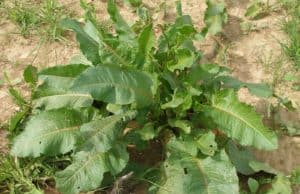Latest News – The Horse

How Can I Keep My Senior Comfortable During a Farrier Visit?
Learn ways you and your farrier can make an arthritic senior horse more comfortable during a trim. This podcast is from the Equine Life Stages: Senior Horses Q&A audio event, sponsored by Merck Animal Health.
TVMDL Drug Testing Lab receives Certification
The laboratory recently earned ISO 17025 accreditation from the American Association for Laboratory Accreditation Competition Animal Drug Testing Laboratory Accreditation Program.
BLM to Modify Rock Springs Wild Horse Holding Facility
Changes will include adding hay storage shelters, constructing a roof over the trimming chute area; installing wind screens, placing protective shelters in the sick pens, replacing worn or damaged corral panels, and more.
AFA Announces Schedule for 2015 Annual Convention
Speakers for the American Farrier’s Association (AFA) conference include some top farriers and several noted veterinarians.
2015 UK Equine Showcase, Breeders’ Short Course Scheduled
The programs are open to vets, owners, and managers or anyone interested in equine reproduction and management.

What Can I Do to Help My Horse With a History of Choke?
Dr. Bryant Craig shares ways to prevent choke in horses. He also shares the signs of choke and what to do during an episode. This podcast is from the Equine Life Stages: Senior Horses Q&A audio event, sponsored by Merck Animal Health.

What Deworming Program is Right for Seniors?
A listener wants to know if strategic deworming is okay for older horses with health issues. Dr. Bryant Craig responds.

Do Horses Need Man-Made Shelters?
When given the option, horses often use behavioral thermoregulation to protect themselves from inclement weather.

New Research Published to Help Working Equids’ Welfare
The studies address clinical problems, such as lameness, husbandry, tack-related wounds, gastric ulceration, parasite infestation, and the risks associated with the meat and milk of the working equid in the human diet.

Gluck Center Interim Leadership Positions Announced
David Horohov, PhD, will serve as interim director for the Maxwell H. Gluck Equine Research Center and Jenny Evans as interim executive director of the Gluck Equine Research Foundation.
Wild Horse Advocates Seek Lawsuit Dismissal
A group of wild horse advocates is seeking the dismissal of a lawsuit asking the Bureau of Land Management to remove excess horses from public and private land in Utah.

Do Senior Horses Really Need to be Vaccinated?
Learn new information about vaccinating senior horses and protecting them from disease. This podcast is from the Equine Life Stages: Senior Horses Q&A audio event, sponsored by Merck Animal Health.

Weed of the Month: Curly Dock
Curly dock grows well in alfalfa, disturbed sites, cultivated fields, ditches, and especially in compacted, overgrazed pastures.
Washington Names Baker New State Veterinarian
Dr. Joe Baker received his DVM from Washington State University and completed an equine reproduction residency at the University of California, Davis.

Racing’s Slow Regulatory Process
One trainer didn’t received sanctions for a June 2013 drug violation until October. A Blood-Horse writer takes a look.
New Bolton Center to Host Equine Sports Medicine Lecture
Drs. Elizabeth Davidson and Liz Arbittier will offer a joint lecture on sports medicine, including lameness evaluations.











